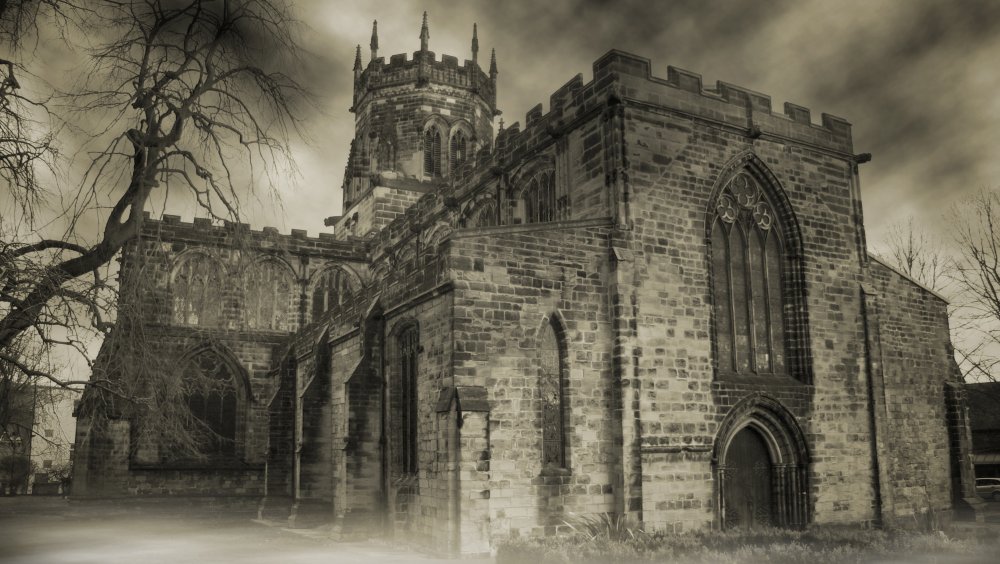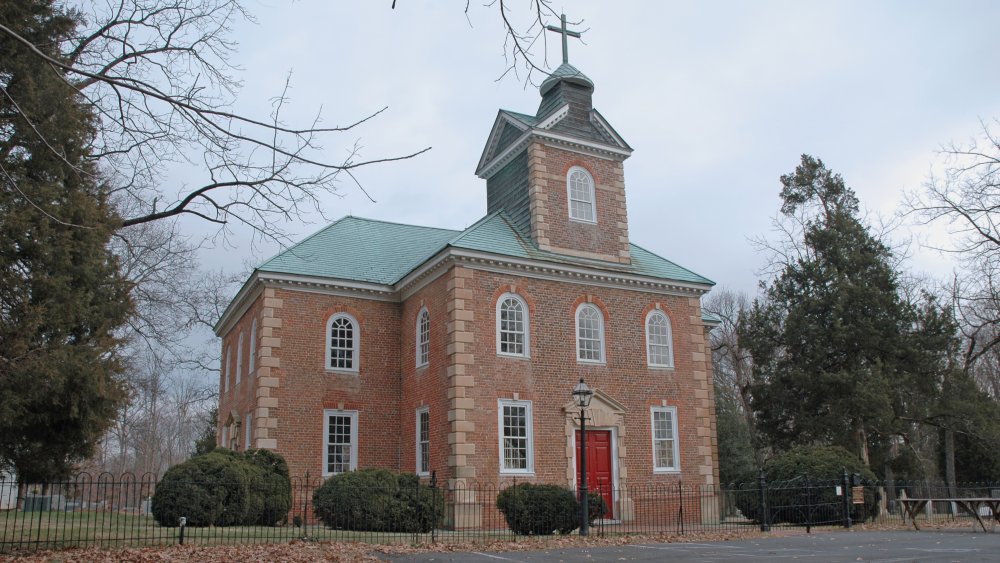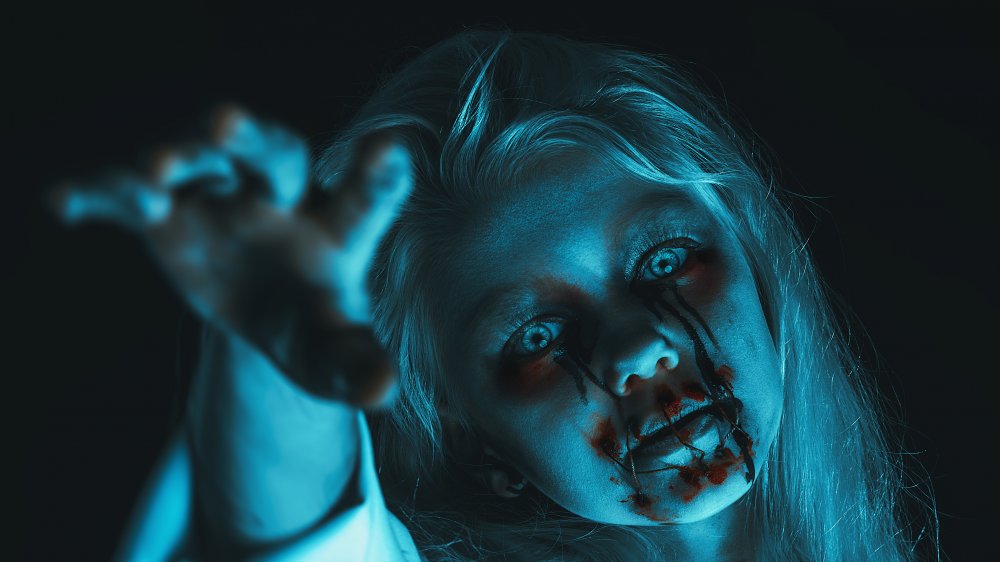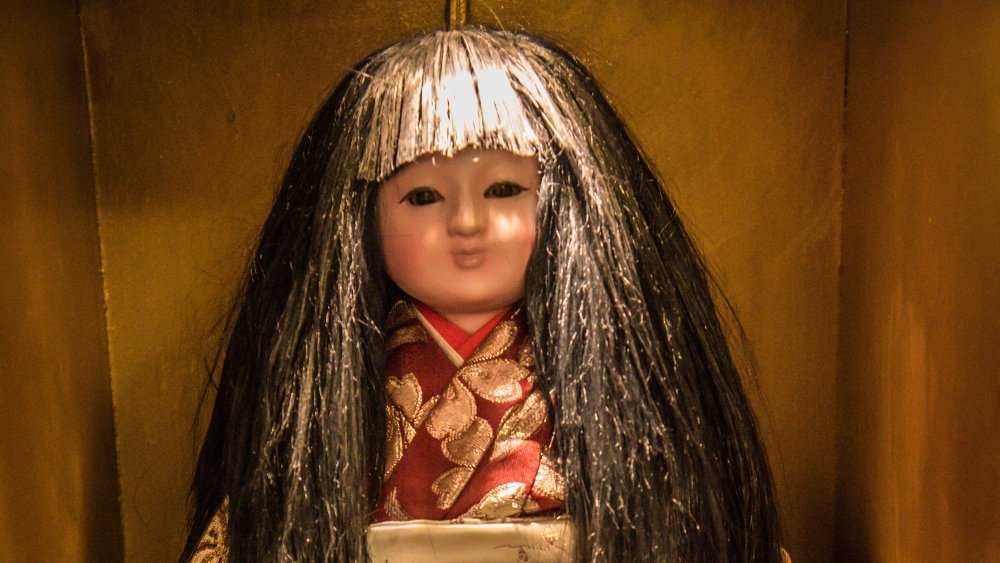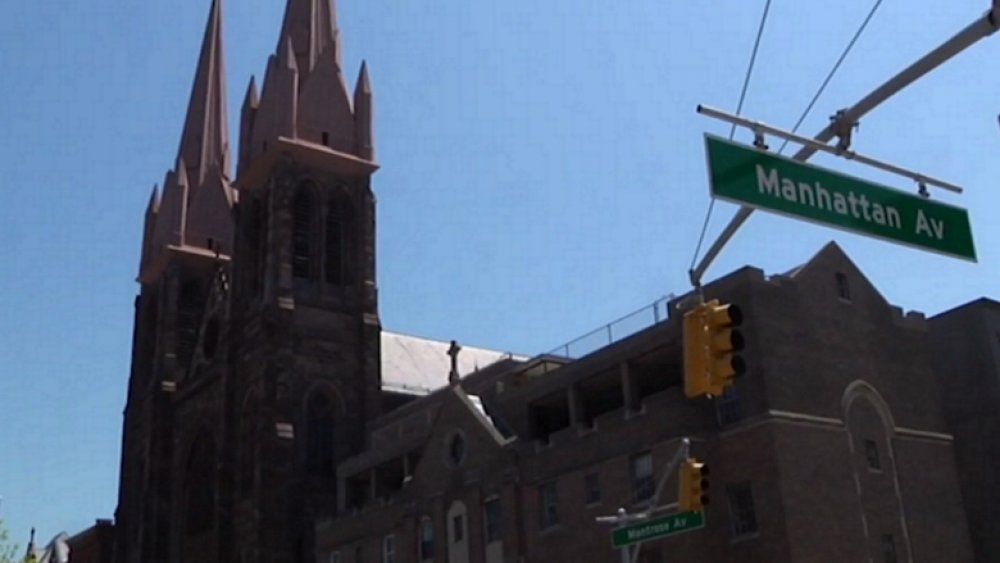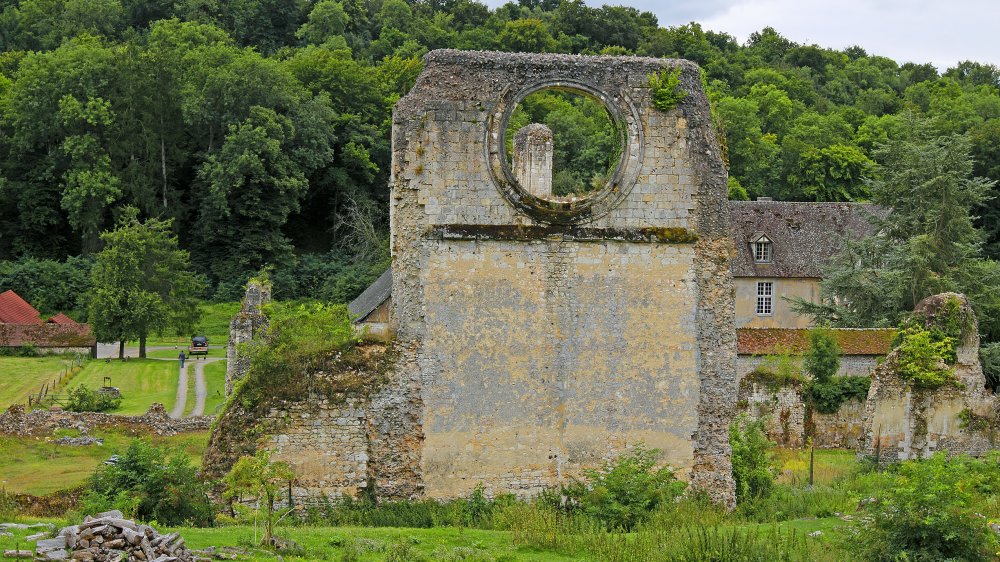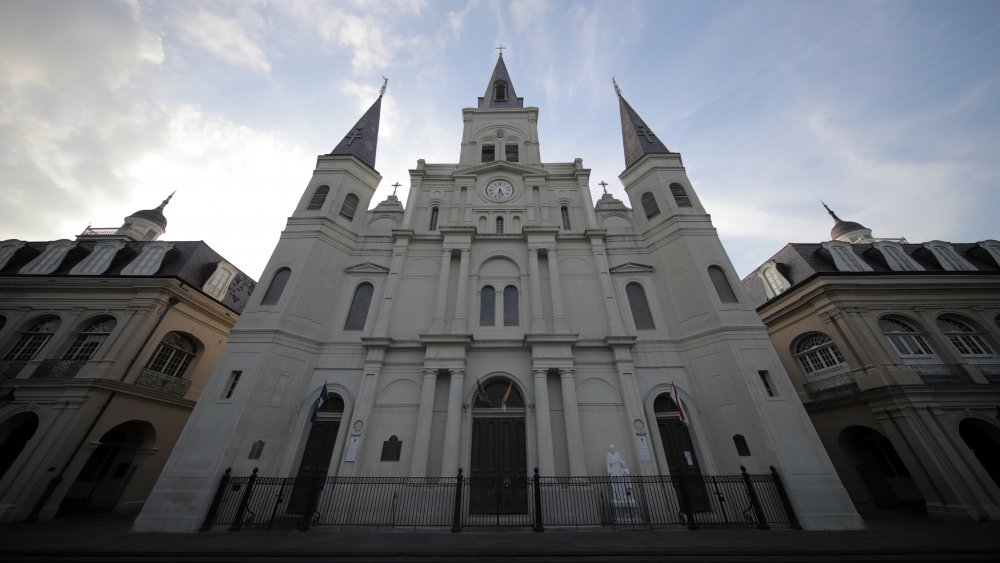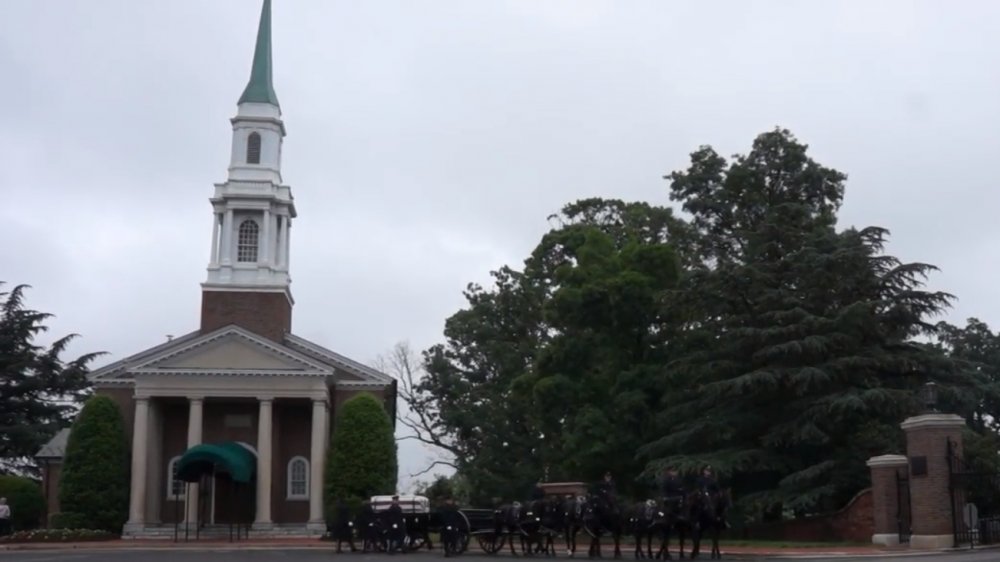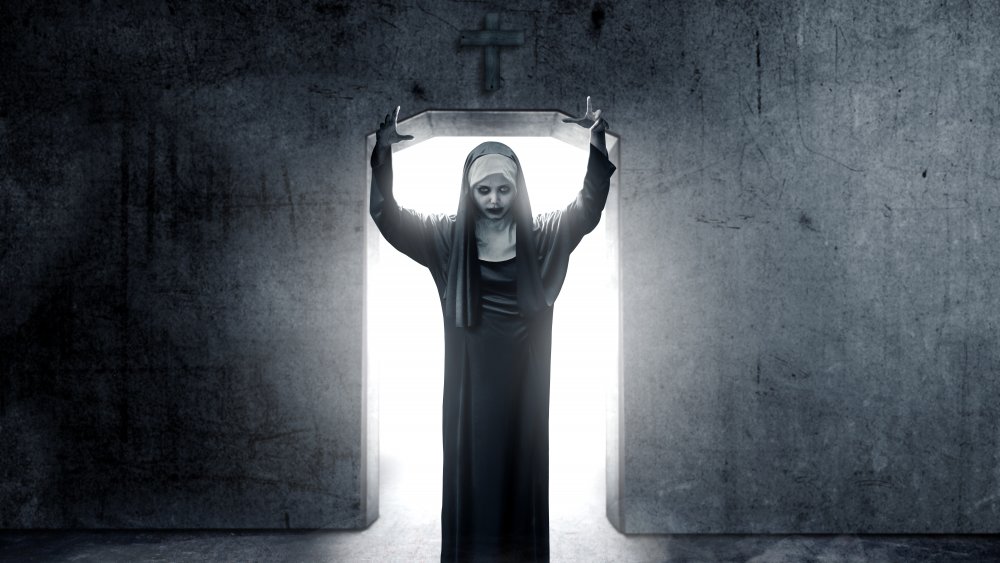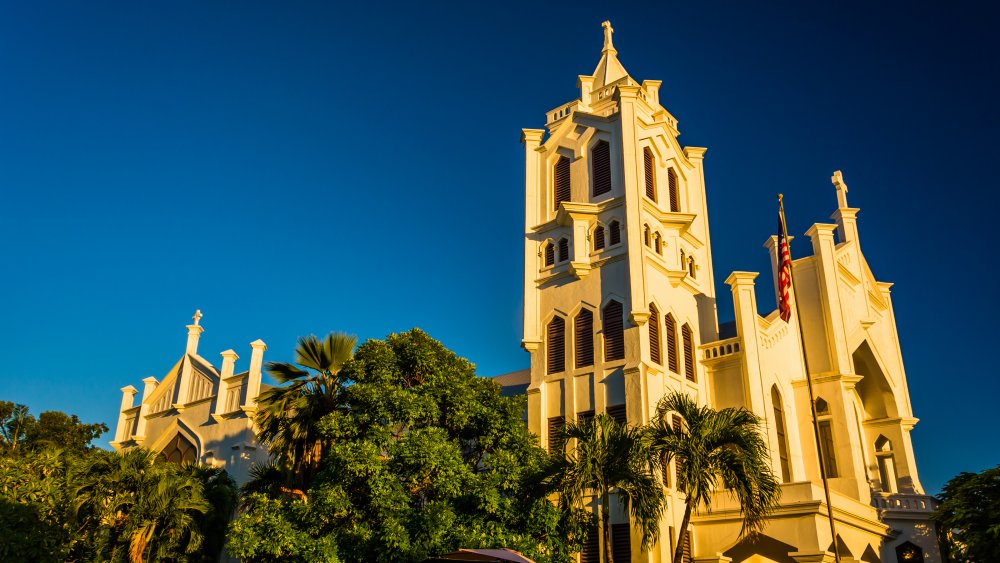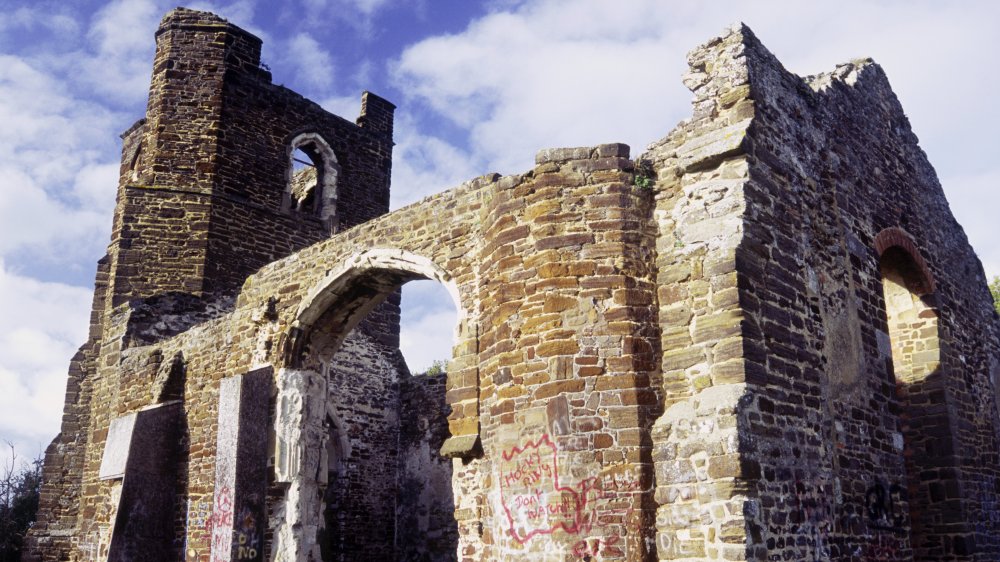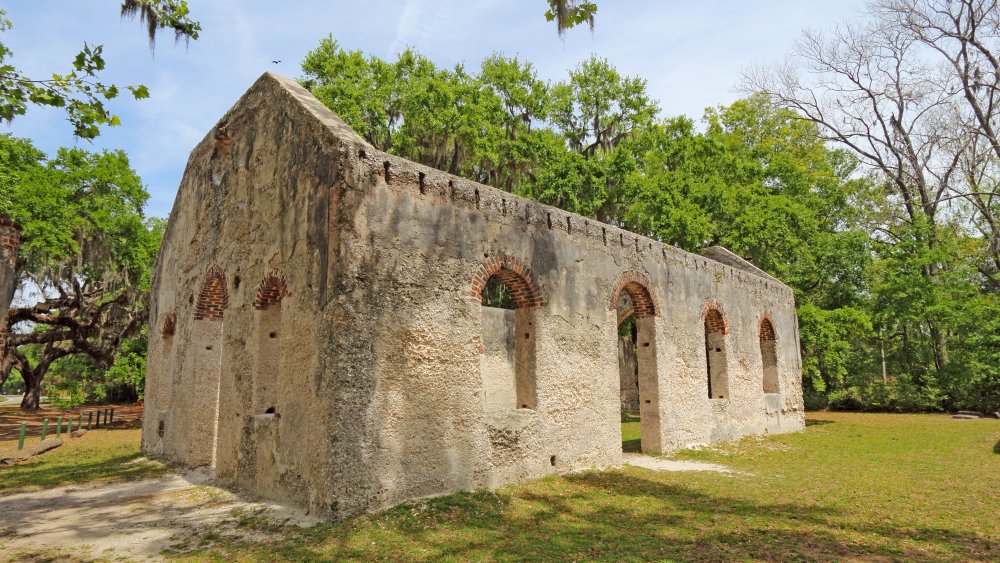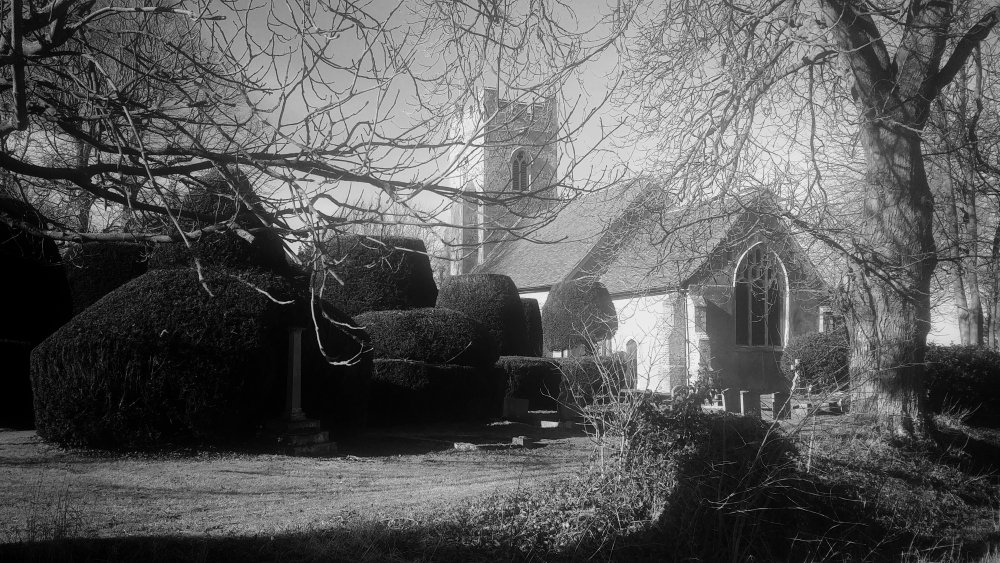Creepy Tales Of Haunted Churches
Often ancient and replete with history, houses of worship provide the rituals that mark life, death, and all of the important milestones in between. Despite serving as symbols of mankind's loftiest spiritual ambitions, churches are, nevertheless, still subject to the spectrum of human frailty. From murder and untimely death to the practice of black magic, chapels, cathedrals, and temples are as likely to bear the stains of tragedy and evil as any haunted house. Although they may be built as sacred refuges for prayer, worship, and reflection to bring solace and peace to the faithful, believers in the paranormal contend that their unavoidable connection to death and the spirit world can also make churches magnets for ghostly activity.
Below, we've gathered stories of some of the most well-documented haunted churches, temples, and synagogues from around the world. From a tiny Japanese temple that houses a most curious resident to a sprawling cathedral that counts the phantom of a Voodoo queen among its congregation, the stories run the gamut from the bizarre and inexplicable to the downright terrifying. Now, turn down the lights and proceed with caution. These are creepy tales of haunted churches.
The golden-haired skeleton of Virginia's Aquia Church
Located in Northern Virginia, Historic Aquia Episcopal Church built in 1757 has stood for over 200 years, enduring three wars, a fire and near-abandonment. The childhood church of patriot George Mason, the principal author of the Virginia Declaration of Rights upon which the United States Bill of Rights is based, Aquia Church has a rich history connected to the founding of the United States. Spared by British troops during the War of 1812 (its sister church, Potomac Church, also located in Stafford County, was destroyed), Aquia Church would serve as a Union Army camp and hospital in the Civil War.
However, Aquia Church's history is not without its dark side. According to Only In Your State, legend holds that in the mid-18th century, a young woman fleeing from a gang of highwaymen took refuge in the church, hiding within its belfry. The robbers found the woman and killed her leaving her corpse behind. Years later, when the church resumed services after the Revolutionary War, the woman's mostly skeletonized remains were found by parishioners who claimed the body had golden tresses as vibrant as those of a living woman. Until they were replaced with concrete, blood stains from the incident remained on the floorboards for nearly a century. To the present day, congregants hear running footsteps in the church's graveyard as well as sounds of a violent struggle within the church's walls. Most disturbingly, the figure of a woman with long blonde hair has been sighted in the balcony window.
Amherst Synagogue's ghostly children
An unusual haunt in that it is a relatively new construction, Western New York's former Amherst Synagogue, built in the 1980s, is witness to some of the most terrifying paranormal activity ever recorded. As documented in Weird New York by Chris Gethard, the very ground on which Amherst Synagogue stands is drenched with innocent blood. Local legend states that the wooded area where the synagogue now stands was the dumping ground of a sadistic child murderer. Years later three men were killed during the building's construction when a wall fell — true believers say it was pushed by the ghosts of the murdered children, angered at the disturbance of their final resting place. Still, others contend that the source of the frightening phenomenon lies in the possibility that the area was once land sacred Native American land.
Regardless of the source of the haunting, the strange occurrences at Amherst Synagogue have terrified even seasoned paranormal investigators and converted confirmed skeptics. Although the rather nondescript, typically '80s architecture of the building is mostly devoid of activity, save for the occasional sighting of ghostly faces peering from the windows, it's the densely wooded lot and overgrown field behind the synagogue that are, for the most part, witness to the frightening happenings. Among the apparitions that continue to plague the environs of Amherst Synagogue are phantom children seen rising from the ground and a wild-eyed, ax-wielding man said to pursue trespassers.
The haunted doll of Mannenji Temple
Since 1938, the Mannenji Temple located in Japan's Hokkaido prefecture, has been host to a most unusual guest. Standing approximately 16 inches tall and dressed in a traditional kimono, Okiku the doll is housed in a specially constructed shrine. Local lore contends that the doll was purchased in 1918 in nearby Sapporo by 17-year-old Eikichi Suzuki for his 3-year-old sister, Kikuko. She was immediately smitten with the doll which became her constant companion. The child and her toy were inseparable until the girl's unexpected death from a fever the following year. Her family, distraught from the girl's sudden passing, placed the doll in their family shrine naming it Okiku in honor of the dead child. Soon, they noticed that the doll was changing. Okiku's hair, which was originally cropped at the jawline, had inexplicably grown. Convinced that the doll held the spirit of their beloved daughter, the family kept the doll until they moved from Hokkaido in 1938 entrusting the doll to the monks of Mannenji Temple where she resides to this day.
However, Okiku's story does not end there. In the seven decades since arriving in her new home, Okiku's apparently human hair has continued to grow, gaining about 10 inches in length. The resident monks are charged with giving her now knee-length mane regular trims. Some visitors who've seen the doll close up claim that Okiku's hair is not her only bizarre feature — she may have grown teeth.
Most Holy Trinity Church's phantom bell-ringer
Originally constructed in 1841 by Father John Stephen Raffeiner to serve a growing population of Catholic German immigrants, New York's Most Holy Trinity Church was rebuilt as the two-towered brick building in 1854 before taking its final incarnation as the twin spired edifice that now towers over the Brooklyn neighborhood of East Williamsburg. Home to a thriving congregation for nearly two centuries, the parish is one of the oldest in Brooklyn.
Founded in the spirit of fellowship and faith, this revered house of worship nonetheless has its share of dark secrets. The church's adjoining school is built on land that once served as a cemetery. As documented on Most Holy Trinity's website, according to legend, not all of the bodies were relocated. Witnesses report phantom footsteps and mysterious voices are often heard resounding throughout the building and lights in the gym turn on and off without cause. Most Holy Trinity's other ghostly tenants include the restless spirit of the church's second priest, Monsignor Michael May, who is said to still reside in his room in the church's rectory. Now reserved as guest quarters, no priest is willing to take Monsignor May's chambers as his own.
In 1897, church sexton and bell-ringer George Stelz was murdered in Most Holy Trinity's vestibule. The bloody handprint of the killer is still present in the stairway leading to the church's bell tower. Parishioners also claim Stelz can be heard roaming the halls and is responsible for the occasional unexplained ringing of the church bells.
Spectral monks haunt France's Abbaye de Mortemer
Nestled in the Fouillebroc river valley in Normandy's Forest of Lyon are the crumbling ruins of L'Abbaye de Mortemer, one of the most haunted locations in France. Constructed of flint and limestone, the secluded 12th century abbey was erected by Abbot Alexandre and his small band of Cistercian monks. By the 15th century, it was a thriving ecclesiastical community home to hundreds of monks and an important seat of religious influence. Yet, in the 17th century a shifting political landscape led to the abbey's rapid decline. By the time of the French Revolution, Mortemer Abbey housed only four monks under its crumbling roofs. Among the changes wrought by the revolution was a distrust of religious institutions which had deadly consequences for the remaining Cistercian brothers. Suspected of hoarding wealth, the monks were hunted down and murdered.
In 1863, the abbey was purchased by M. Delarue, a wealthy Parisian who moved his family into one of the remaining houses. The Delarues found their new home anything but welcoming. Plagued by ghostly lights, horrifying sounds, doors and windows opening and closing by unseen hands, and a procession of spectral monks, the Delarue family had the grounds exorcised to no avail. Mortemer Abby is also the alleged home of the White Lady, assumed to be the ghost of Empress Matilda of England, daughter of King Henry I and benefactress of the abbey. Seen gliding through the abbey's broken arches, the appearance of the White Lady often portends misfortune.
St. Louis Cathedral and the ghosts of the Big Easy
Long considered the heart of New Orleans, St. Louis Cathedral, located in the city's French Quarter, is North America's longest continually operating Catholic cathedral. Known for its three distinctive steeples, the cathedral, originally built in 1727 for the canonized French monarch King Louis IX, burned to the ground during New Orleans' great fire of 1794. Rebuilt in the 1850s, the current church was upgraded from cathedral to basilica in 1964. Witness to three centuries of New Orleans' history, the cathedral is among a number of supernatural hotspots in the Big Easy.
It's most famous (and vocal) specter is the ghost of the heroic monk Pére Dagobert. Dagobert, in defiance of the New Orleans newly-installed Spanish governor, performed the funeral rites for six executed Creole rebels left to rot outside the cathedral as an example to would-be revolutionaries. As documented by Haunted Houses, Dagobert boldly led a procession of the slain men's families through the streets of New Orleans, loudly singing the funeral mass in his distinctive baritone all the way to an unmarked grave. Dagobert, who died of natural causes in 1776, can still be heard intoning his kyrie on rainy mornings. Some claim to have witnessed the robed monk leading a phantom funeral procession from the cathedral doors through a nearby alleyway.
Aside from the cathedral's many ecclesiastical spirits, the ghosts of both the infamous murderer Madame Delphine Lalaurie and the iconic Voodoo practitioner Marie Laveau are said to haunt the pews.
The ghosts of Arlington's Old Post Chapel
Located adjacent to the historic Arlington National Cemetery, the final resting place of presidents, astronauts, and America's fallen service members, Old Post Chapel stands out as one of the Washington, D.C. area's most notorious haunted locations. Commissioned in 1933 by George S. Patton, Old Post Chapel stands on the former location of U.S. Army outpost Fort Whipple, and functions as a community worship center, wedding chapel, and funeral chapel. With its deep roots in American history and tragedy, it comes as little surprise that Old Post Chapel is rife with paranormal activity.
Unexplained voices and organ music are said to emanate from the chapel late at night. Locked doors and cabinets swing open without logical explanation, and a host of apparitions frequent the building's grounds including a ghost believed to be the spirit of Mary Ann Curtis Lee, the widow of Robert E. Lee, who stands vigil by the Confederate general's memorial. The wailing shade of a grief-stricken woman in white, thought to be waiting in vain for her mate, has been seen and heard by the chapel's entrance. According to legend, she threw herself from Old Post's now-locked bell tower which remains off limits to the public to this day. Even animals are not immune to the chapel's terrors. As reported by the website of the Arlington Public Library, K-9 dogs that patrol the historic military cemetery refuse to enter Old Post Chapel, especially at night.
Black magic taints this Irish abbey
Dating to 1298, the ruins of Saint Katherine's Augustinian Abbey located in County Limerick is host to one of the most feared hauntings in Ireland. Known to locals as the Abbey of the Black Hag, the crumbling medieval nunnery, one of only a handful in Ireland, was officially put out of commission by Pope Martin V in 1541, however, as recorded in The Diocese of Limerick, Ancient and Medieval, the abbey was suppressed and vacant by 1428 "owing to some irregularities of the prioress." These alleged "irregularities" apparently included the practice of black magic and bizarre sex rituals. According to Ordnance Survey Ireland, the diabolical abbess remained in the abandoned nunnery, her skin blackened by dismal living conditions and sinister magic.
Another legend associated with St. Katherine's Abbey is the tragic tale of the Countess of Desmond. Fleeing from attackers with her husband, the Earl of Desmond, the countess was shot through with an arrow. The grieving earl hastily buried his bride in a makeshift grave on the abbey's grounds. Sightings of her ghostly figure roaming the woods around the abbey prompted an investigation of her grave which revealed she had been buried alive. Having regained consciousness, she attempted to claw her way out of the grave wearing her fingers to the bone in a frantic fight for life.
Key West's creepiest church
Located on the laidback, vacation spot of Key West, St. Paul's Episcopal Church has faced untold tragedy in its nearly two centuries of operation. Destroyed by fire in 1886 and again by a 1928 hurricane that uprooted bodies from its adjoining cemetery, St. Paul's has been rebuilt several times since its initial construction in 1838. Built on land donated by the widow of land baron John Fleming on the condition that her husband's remains were never to be removed from the grounds, the church has an ever-growing congregation of ghosts.
One of St. Paul's most active spirits is the ghost of John Fleming himself. The location of his gravesite lost in one of the church's many reconstructions, he appears as a misty apparition dressed in 19th century clothing. Spectral children have been seen huddled around a statue of an angel on the church's ground. According to local lore, the kids were killed in a fire set by a clergyman who went mad when he discovered his wife in a tryst with a deacon. Of course, no Key West haunting would be complete without a ghost pirate — both a phantom freebooter and ghostly sea captain roam St. Paul's churchyard.
England's desecrated 'wrong way' chapel
From ghostly lights and black mists to the figure of a hooded monk seen roaming among the ruins, Bedfordshire, England's long-abandoned Church of St. Mary the Virgin located in the ancient village of Clophill has a long history with the supernatural and occult. Built in 1350, the church is said to be built facing the "wrong direction," its altar pointing away from the rising sun, and therefore, away from God. Despite this frequently cited assertion, the church is oriented toward Jerusalem as is the case with many medieval churches. Nevertheless, this sinister reputation has made the crumbling edifice of St. Mary's Church a magnet for would-be practitioners of the dark arts.
In 1963, the church was targeted by graverobbers who exhumed the remains of Jenny Humberstone, the wife of an apothecary who died in 1770. The bones were scattered about the grounds in a pattern suggesting an attempt at some manner of dark ritual. St. Mary's faced a spate of desecration and damage to its cemetery throughout the late 1960s and early 1970s leading local authorities to move the headstones and plow the earth to obscure the graves.
The Chapel of Ease and the tomb that won't be sealed
In a clearing enclosed by a stand of skeletal trees shrouded in Spanish moss, the burned-out husk of what was once St. Helena's Chapel of Ease exudes an undeniably spooky atmosphere. Built on Beaufort, South Carolina's St. Helena's Island in 1740 to provide a convenient place of worship for local planters, the Chapel of Ease was gutted by a fire sometime after the Civil War. The ruins of the chapel and its adjoining graveyard remain virtually untouched for more than a century. According to a Beaufort tourism website, EatSleepPlayBeaufort, some claim to have heard the disembodied voices of a ghostly choir raised in song. Others have experienced feelings of dread inside the structure.
In the Chapel of Ease's graveyard stands an ornate mausoleum built as the final resting place of Edgar and Eliza Fripp. During the Civil War, the couple's tomb was ransacked by Union soldiers looking for treasure. Soon after, workmen were contracted to brick up the mausoleum's damaged doorway. Having finished their job, the workers returned to find the tomb unsealed, their bricks neatly stacked by the mausoleum's door. All subsequent attempts ended with the same result. The Fripp mausoleum remains unsealed to this day.
The legacy of Great Britain's most haunted rectory
Until it was gutted by fire and demolished in 1944, Borley Rectory was known as England's most haunted house. Built in 1863 by the Reverend Thomas Bull, the rectory was said to be host of a variety of disturbing paranormal activity which drove two rectors from the house, one of whom stayed for only nine months.
In 1929, psychic investigator Harry Price began a study of the rectory lasting nearly a decade. In the course of his investigation, Price experienced incidents of intense poltergeist activity including moving objects, spirit writing, mysterious rappings, and unexplained footsteps. Price, whose fame and finances were greatly increased by his investigation of Borley Rectory, chronicled his findings in two books and was working on a third at the time of his death in 1945. A 1956 analysis of Price's findings by the Society for Psychical Research determined that Price may have falsified some elements of the Borley haunting.
Nevertheless, unexplained incidents continued to occur with the focus of the haunting transferred to nearby Borley Church. Although diminished in intensity, footsteps, allegedly those of a legendary phantom nun, were heard in and around the church as late as the 1970s.
